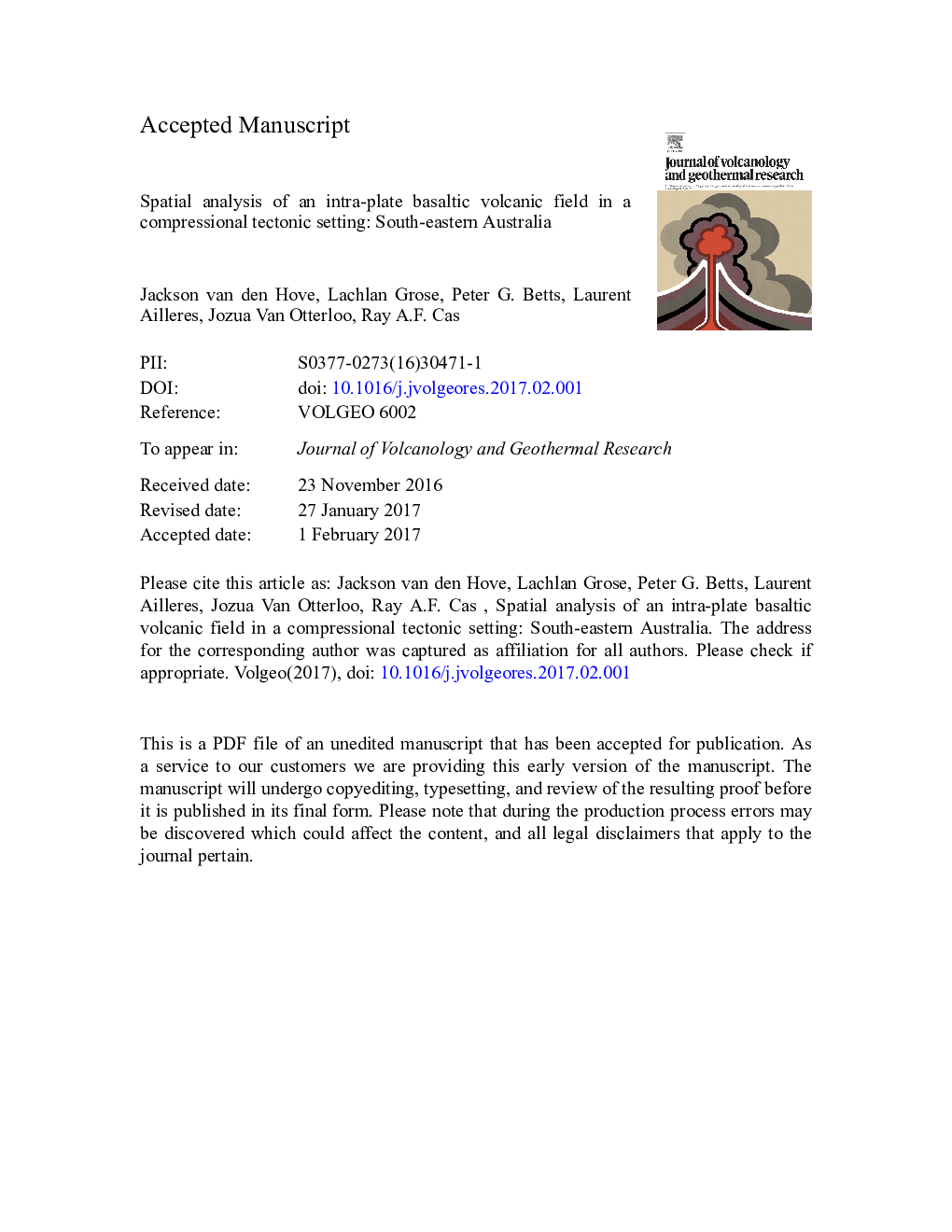| کد مقاله | کد نشریه | سال انتشار | مقاله انگلیسی | نسخه تمام متن |
|---|---|---|---|---|
| 5783926 | 1638288 | 2017 | 39 صفحه PDF | دانلود رایگان |
عنوان انگلیسی مقاله ISI
Spatial analysis of an intra-plate basaltic volcanic field in a compressional tectonic setting: South-eastern Australia
ترجمه فارسی عنوان
تجزیه و تحلیل فضایی یک میدان آتشفشانی بازالت در داخل ورقه در یک ساختار فشرده سازه زمین شناسی: جنوب شرقی استرالیا
دانلود مقاله + سفارش ترجمه
دانلود مقاله ISI انگلیسی
رایگان برای ایرانیان
موضوعات مرتبط
مهندسی و علوم پایه
علوم زمین و سیارات
ژئوشیمی و پترولوژی
چکیده انگلیسی
The Newer Volcanics Province (NVP) is a Pliocene to Recent intra-plate basaltic volcanic field (BVF) that has formed in a compressive tectonic setting (Ïv < Ïhmin < ÏHmax) and is not readily attributed to a single geodynamic process. A comprehensive spatial analysis of both monogenetic eruption centres and coeval vents of the NVP constrain factors that control the distribution and emplacement of volcanoes. A point-set of 434 eruption centres totalling 726 vents are divided into three geographical sub-provinces for analysis. Kernel density estimation and Poisson nearest neighbour analysis are used to scrutinize the distribution of eruption centres. A simple and novel fitted regression line method is used to determine the orientation of coeval vents, and Hough transform and two-point azimuth methods are used to identify alignments and alignment trends between eruption centres. The distribution of eruption centres and their relative spatial density corresponds with the extent of thinner lithosphere. Eruption centres of the NVP have a clustered distribution whilst smaller sub-sets of eruption centres are distributed more uniformly. The main alignment trends between coeval vents related to individual dikes and between eruption centres related to successive temporally discrete dikes are primarily oriented nearly parallel with pre-existing crustal fault trends. The frequency of volcanic alignments shows faults oriented nearly parallel to the orientation of the regional maximum horizontal compressive stress (Ï1) are favourably utilised by intrusions over other fault trends. The depth from which pre-existing faults facilitate dike propagation is not constrained. We interpret they are likely important in preventing dikes from stalling and forming sills under a compressive stress field in the case of the NVP. It is also observed that coeval vent alignments are more strongly aligned in areas overlying consolidated basement relative to areas of poorly consolidated basin sediments. This could be explained by poorly aligned groups of vents being fed by shallow sills, preferentially forming in layered basin sediments.
ناشر
Database: Elsevier - ScienceDirect (ساینس دایرکت)
Journal: Journal of Volcanology and Geothermal Research - Volume 335, 1 April 2017, Pages 35-53
Journal: Journal of Volcanology and Geothermal Research - Volume 335, 1 April 2017, Pages 35-53
نویسندگان
Jackson van den Hove, Lachlan Grose, Peter G. Betts, Laurent Ailleres, Jozua Van Otterloo, Ray A.F. Cas,
